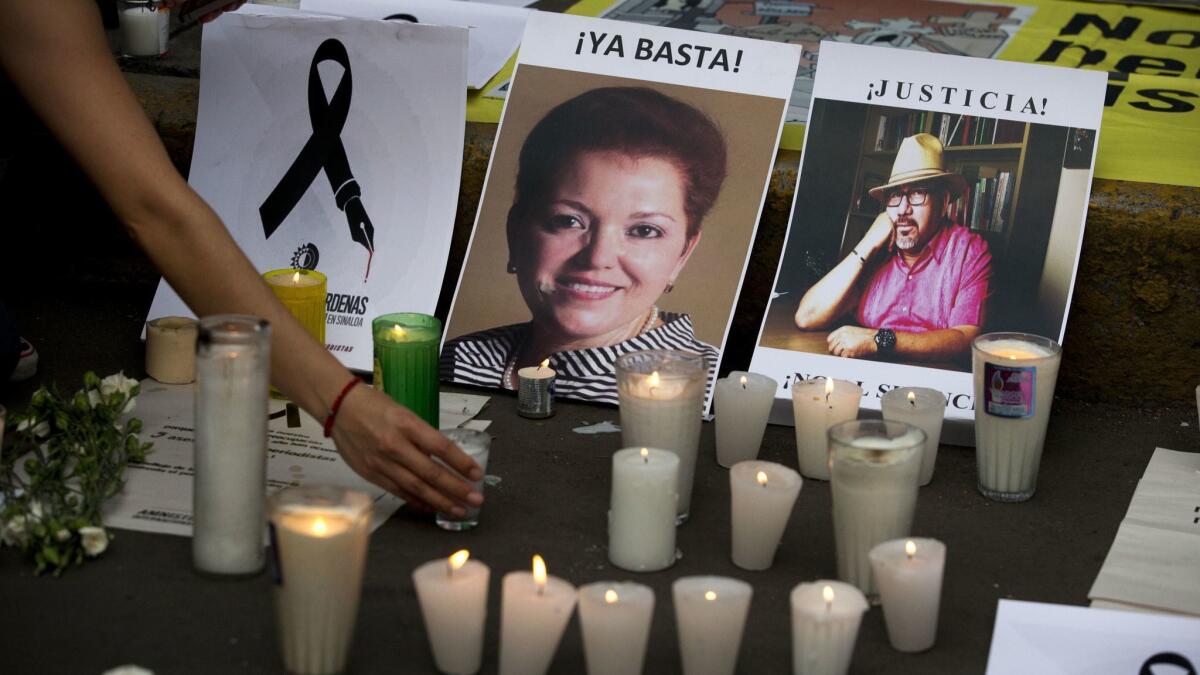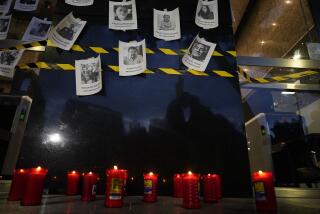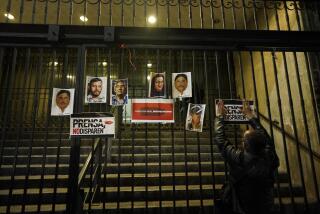He reported threats against his life. This week, he became the ninth journalist killed in Mexico this year

Two years ago, Mexican journalist Mario Gomez Sanchez went to police and told them he was afraid for his life.
Gomez, who worked at a newspaper in the southern state of Chiapas, said he had been threatened on Facebook by the driver of a member of Congress whom Gomez had accused of corruption in a recent news story.
According to the press freedom group Article 19, which interviewed Gomez about the threats at the time, the driver vowed to “load” Gomez with bullets. “I’ll blow your head off,” the driver reportedly said.
On Friday, Gomez was leaving his house in the small town of Yajalón when two unknown attackers approached on motorbikes and opened fire. Gomez, 40, was shot multiple times, authorities said. He died later at the hospital, becoming at least the ninth journalist slain in Mexico this year.
Local and federal officials condemned the attack, and Mexico’s Attorney General’s office said it was deploying a team of prosecutors specialized in investigating attacks against members of the press.
Prosecutors will determine whether the shooting was linked to Gomez’s work as a journalist or whether it was related to more general violence in the region.
One of the poorest states in Mexico, Chiapas has a long history of violence and political unrest. Homicides have risen there dramatically in recent years, mirroring an increase nationwide, in part because of an uptick in organized crime.
Gomez had been a reporter at the Chiapas Herald for eight years. He covered general news but also occasionally published investigations, and in recent months had written stories about politics and organized crime.
According to a report published in 2016 by Article 19, the threats Gomez reported to police that year were not properly investigated and did not result in any prosecutions. The group said at the time that it had asked local and federal authorities for “precautionary measures ... to safeguard physical safety of the journalist.”
Jan-Albert Hootsen, Mexico representative for the Committee to Protect Journalists, another press freedom group, said in an interview that he believes it is “definitely possible” that the attack was related to Gomez’s work as a journalist, although he said a thorough investigation is needed.
On Twitter, Hootsen said: “Mexican authorities must take all appropriate actions to investigate the murder of Mario Gómez exhaustively and credibly. Unless the staggering level of impunity in journalist killings is addressed, Mexicans reporters will time and time again become victims of violence.”
Mexico is one of the most dangerous countries in the world for journalists, vulnerable to threats and violence both from organized crime as well as public officials. Over the last several years, journalists have been killed on average once every month.
Hundreds of journalists have sought help from a federal protection program that provides emergency evacuations, police escorts and a panic button that summons authorities. But even journalists enrolled in that program have been slain.
Mexico’s National Human Rights Commission, which runs the protection program, on Saturday condemned Gomez’s death and said it would provide support to members of his family.
Cecilia Sanchez in The Times’ Mexico City bureau contributed to this report.
Twitter: @katelinthicum
More to Read
Start your day right
Sign up for Essential California for news, features and recommendations from the L.A. Times and beyond in your inbox six days a week.
You may occasionally receive promotional content from the Los Angeles Times.







